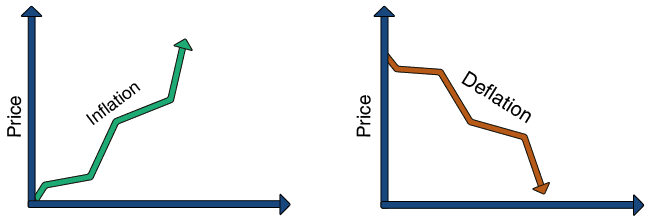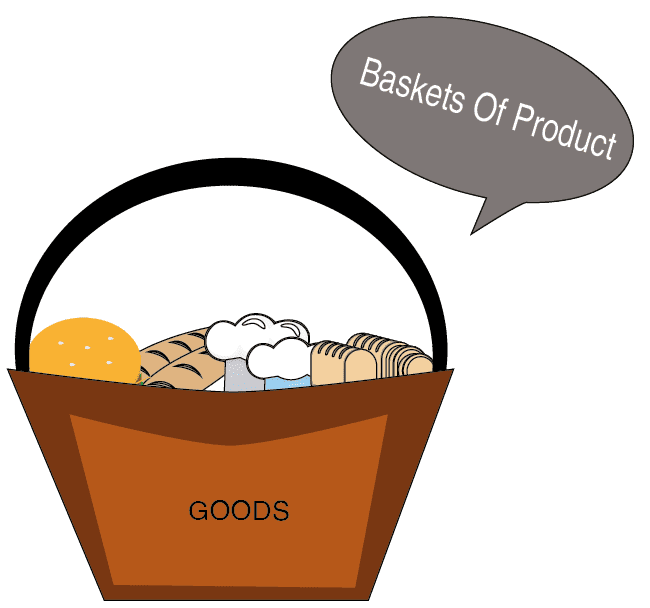Inflation Deflation – What are Those?
Definitions
When prices in a given country exhibit a prolonged rising trend, it is called inflation.
When prices in a given country exhibit a prolonged downward trend, it is called deflation.
The following explanations relate primarily to an inflationary situation since deflation is very rare, and because the relationship between inflation and deflation is fairly obvious.

Identifying the Trend of Prices ( Inflation Deflation )
Through a Fixed Basket of Products
The trend of prices in a country is measured in accordance with a basket of products.
The basket of products (”the basket”) reflects all of the products that an average family of urban wage earners buys during one month.
The following is an incomplete (and fictitious) example of a basket of products:
-
Bread – 50 loaves.
-
Milk – 30 containers.
-
Cheese – 30 containers.
-
Electricity – 100 kilowatt-hours.
-
Water – 60 cubic meters.

The Basket Price
The price that we have to pay to buy all the products in the basket is called the basket price.
Monitoring the basket price
If, for example, the basket price in January of 2000 was $4,000, and a month later it had risen to $4,080, then the basket price increased by 2% from January through February. If the basket price rose to $4,100 by the beginning of March, then this represents an additional 0.5% increase during February.
Prices of the products in the basket usually rise. In any given month, the price of bread might possibly fall by 5%, while the price of milk rises by 10% and the price electricity remains unchanged.
We measure the total basket price as a single package.


